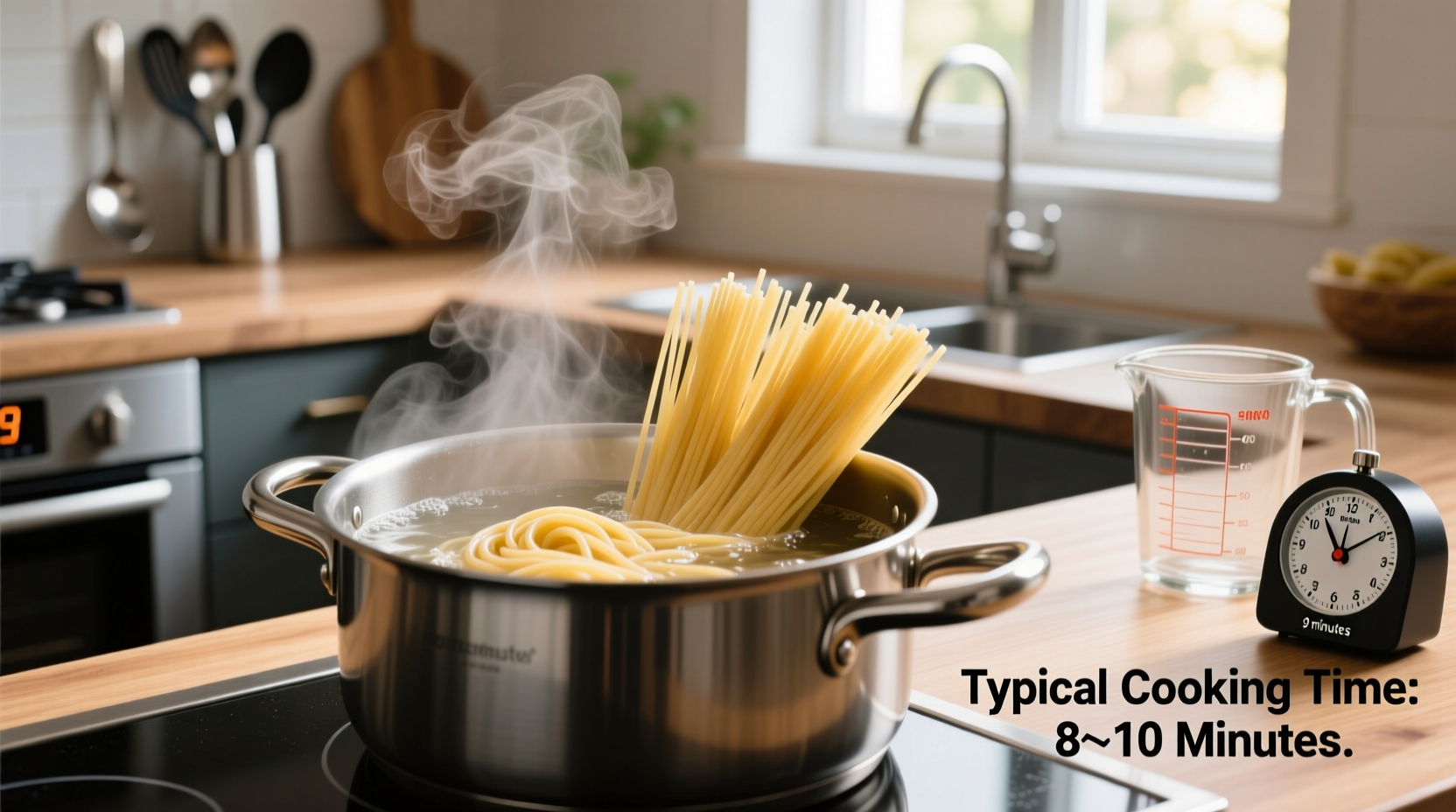Ever stood over a boiling pot, timer in hand, wondering exactly when your pasta will reach that perfect al dente texture? You're not alone. Getting pasta cooking time right separates decent meals from restaurant-quality dishes. This guide delivers precise cooking times for every pasta shape, visual and tactile cues to determine perfect doneness, and professional techniques to avoid common mistakes—saving you from mushy strands or unpleasantly firm bites.
Why Pasta Cooking Time Varies: Beyond the Package Instructions
While most dried pasta packages suggest 8-12 minutes, that's merely a starting point. Several factors influence actual cooking time:
- Pasta composition: Egg content, semolina quality, and drying methods affect water absorption
- Shape and thickness: Thin strands cook faster than dense shapes like rigatoni
- Water volume and temperature: Insufficient water lowers temperature when pasta is added
- Altitude: At elevations above 3,000 feet, water boils at lower temperatures, extending cooking time by 25%
- Personal preference: Some prefer firmer al dente, others slightly softer textures
According to the Italian Food Association, traditional pasta cooking standards evolved from 19th century Italian culinary practices where precise timing became essential as pasta production shifted from artisanal to industrial methods.
Complete Pasta Cooking Time Reference Guide
| Pasta Type | Dried Pasta Time | Fresh Pasta Time | Key Visual Cues |
|---|---|---|---|
| Spaghetti, Linguine | 8-10 minutes | 2-3 minutes | Uniform color, slight sheen |
| Fusilli, Penne | 10-12 minutes | 3-4 minutes | Hollow centers lose white core |
| Fettuccine, Pappardelle | 9-11 minutes | 2-3 minutes | Flexible but maintains structure |
| Orzo, Pastina | 7-9 minutes | 1-2 minutes | Translucent appearance |
| Lasagna Sheets | 8-10 minutes (if pre-boiling) | No pre-boiling needed | Pliable without tearing |
The Professional's Method: Testing for Perfect Doneness
Timing alone won't guarantee perfect pasta. Professional chefs use these three verification methods:
- The Bite Test: Remove a piece 1-2 minutes before suggested time. It should offer slight resistance in the center while being tender throughout.
- The Visual Check: Properly cooked pasta maintains its shape without cracking or becoming translucent. Dried pasta loses its opaque white core.
- The Throw Test (traditional method): While not practical in modern kitchens, Italians traditionally tested doneness by throwing a strand against the wall—it should stick slightly when perfectly cooked.

Avoid These 4 Common Pasta Cooking Mistakes
Even with correct timing, these errors can ruin your pasta:
- Insufficient water: Use 4-6 quarts of water per pound of pasta. Crowded pots create sticky, unevenly cooked strands.
- Adding oil to water: Contrary to popular belief, oil prevents sauce from adhering to pasta. Salted water alone prevents sticking.
- Discarding all cooking water: Reserve 1-2 cups of starchy water to help emulsify sauces and improve texture.
- Overcooking during sauce integration: Finish cooking pasta in sauce for 1-2 minutes only—any longer turns it mushy.
Advanced Techniques for Perfect Pasta Every Time
Take your pasta skills to restaurant level with these professional methods:
- Temperature monitoring: Maintain a vigorous simmer (195-205°F), not a rolling boil, for even cooking
- Salting properly: Add salt after water boils (1-2 tablespoons per gallon) to avoid pitting stainless steel pots
- Stirring technique: Stir immediately after adding pasta, then every 2 minutes to prevent clumping
- Shock stopping: For pasta salads, plunge cooked pasta into ice water for 10 seconds to halt cooking, then drain thoroughly
According to culinary research from the Culinary Institute of America, the starch gelatinization process that determines pasta texture occurs between 140-185°F, explaining why precise temperature control matters more than many home cooks realize.
Special Considerations for Dietary Restrictions
Alternative pasta varieties require different timing approaches:
- Gluten-free pasta: Typically cooks 2-3 minutes faster than wheat pasta. Test frequently as it can go from underdone to mushy rapidly.
- Whole wheat pasta: Requires 2-4 minutes longer cooking time. Look for uniform color change as the primary doneness indicator.
- Vegan 'egg' pasta: Follow standard dried pasta timing but reduce by 1 minute for fresh versions.
Putting It All Together: Your Perfect Pasta Workflow
Follow this sequence for consistently excellent results:
- Bring ample salted water to vigorous boil
- Add pasta and stir immediately
- Begin testing 2 minutes before package time
- Reserve 1.5 cups cooking water before draining
- Finish cooking in sauce for 60-90 seconds
- Serve immediately with proper sauce-to-pasta ratio
Remember that pasta continues cooking from residual heat after draining, so aim for slightly underdone when testing in the pot. This Serious Eats culinary research confirms that removing pasta 1 minute before ideal doneness accounts for this carryover cooking.











 浙公网安备
33010002000092号
浙公网安备
33010002000092号 浙B2-20120091-4
浙B2-20120091-4